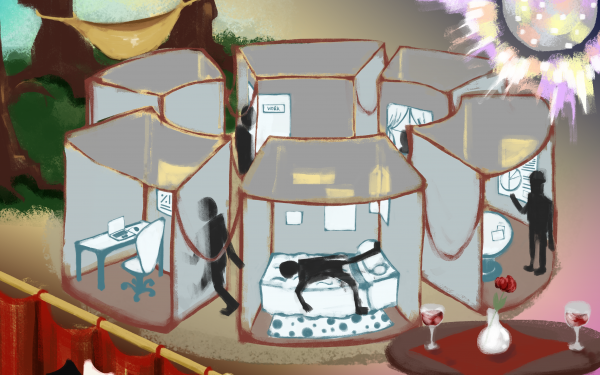Style and the city
From everyday looks to funky and experimental, Montreal students show what style means to them
Montreal is a city with a vibrant and diverse fashion scene. As the temperature drops, many people are wondering how to stay warm while still expressing their personal style.
To learn more about style in the city, The Link spoke to Montreal students.
Srabanti Mazumdar is a third-year software engineering student at Concordia University who runs @mtlslays on Instagram. The local account has just over 2,000 followers and highlights stand out outfits and innovative dressers across the city. Mazumdar started the account around two years ago, during the COVID-19 pandemic.
“I just remember I noticed people's outfits outside and I would analyze them,” Mazumdar said. “I wanted to memorize the pieces they were wearing, but I couldn't, because I didn't have a picture of them. And then I saw someone from Toronto doing the same thing—their account is called @416_fits—so I DM’ed them and I asked if they would mind if I did the same thing in Montreal.”
Even before starting the account, Mazumdar was drawn to fashion from a young age.
“I'm Bengali, and in my culture fashion is a big thing. The fabrics we use for our saris or our lehengas are super nice, and they look very extravagant,” she said. “So even though it's not the same style, I think it's always been a part of my life.”
Fashion, she explained, goes beyond clothing; it’s a tool for connection and storytelling.
“Fashion also connects people. It signals subcultures together; they can identify each other with the way they dress,” Mazumdar said. “If you see someone else dressed in punk, you know that person is probably anarchist. But it can be as simple as seeing someone with their school’s name on their sweater.”
For Mazumdar, practices like thrifting can reveal hidden stories behind clothing.
“It's a form of art that becomes a part of you,” she said. “I love it when you go thrifting and you see a cool shirt, and there's a whole life behind it. Someone lived a whole life prior to this shirt being in the thrift store. Or even when an outfit has pieces from people in their life. Like, ‘Oh, I stole these jeans from my sister, and this necklace was gifted to me by my friend.’ It's like, there are so many little stories behind it.”
Through @mtlslays, Mazumdar is exposed to many creative outfits around the city. Montreal fashion expands into an array of different styles, sometimes fitting in specific subcultures and “-cores,” and other times breaking away from these molds.

Alex is a film production student at Concordia.
“I used to be inspired by high fashion,” Alex said, “but now I see a piece and I like it or I don’t.”

Lauren Huang is a nursing student at McGill University and Ariana Noche is a cinema and communications student at Dawson College.
“People in Montreal are very experimental with their style,” Noche said. “You won’t see two people dressing the same way. They always have something different about them.”

Noah Spivack is the founder of the Sustainable Fashion and Thrift club, also known as Second Soul Montreal. The club is a community for Montrealers who value second hand clothes as an alternative to fast fashion.
Their club motto reflects on giving previously unwanted clothing another life.
“We like to view things as caterpillars and butterflies. Caterpillars are the garments in your closet that don’t see too much love, but other people can see these clothes and love them,” Spivack said. “It is just a matter of reallocating them to the people that love them as butterflies.”

Victor Okoro is a computer engineering student at Concordia.
“Start buying pieces you like instead of trendy stuff,” Okoro said. “Get colours you’re comfortable with, stuff you’re comfortable in, and never be scared to explore.”

Emma Sexton is a human relations major with a minor in religions and cultures at Concordia.
“The most fun I have with fashion is in the city,” Sexton said. “I feel more emboldened to try out crazier looks when I’m in Montreal because I feel everyone else is also experimenting.”
This article originally appeared in Volume 45, Issue 6, published November 19, 2024.


_600_832_s.png)



